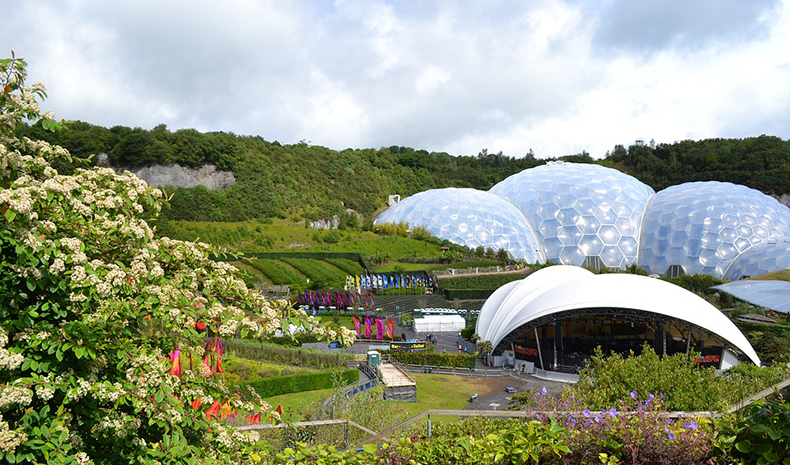It’s almost 2020. There are now regular global climate strikes led by students and millions of other people protesting the inability of politicians to act on climate change. Architecture firms and designers are no different, coming together to explore how the architecture industry can do its part to fight the current climate crisis. Architects are in a great position to make decisions about how the natural environment is preserved and how we can develop sustainably. Here are 8 concrete steps that architects can take to protect the environment.
1. Discuss the Benefits of Biodegradable Materials with Clients
The construction industry is primarily supported by fossil fuels, which of course have a huge carbon footprint. Designers are now starting to use biodegradable materials for a greener building process. For example, mycelium is the vegetative part of fungus, and when dried its hundreds of interwoven fibers are very strong. Mycelium can be combined with farm waste in molds to make organic bricks.

These are created with no carbon emission or waste and they decompose completely when they’re no longer needed. There are also other alternative biodegradable materials, from cork to bamboo and even desert sand, all of which have been successfully used in construction.
2. Promote the Use of Local Materials
A project can have a large environmental impact if materials originate very far from where they’re manufactured or used in construction. In the words of Marcus Wainwright, an architecture writer at Australian Help, “the distance between each calls for transportation that can result in immense greenhouse gas emissions through burning fuel. When using locally sourced materials, the distances are greatly reduced and the project has a much smaller carbon footprint.”
3. Move Away from Concrete to Timber Frames
Concrete frames are responsible for tremendous amounts of carbon emissions. Globally, we produce four billion tons of cement every single year to make concrete. This accounts for 8 percent of the total carbon dioxide emissions in the world. Not only that, but it’s an incredibly water-intensive process, affecting drinking water and irrigation. Instead of concrete frames, architects can move towards timber as an alternative in conjunction with sustainable forestry management to make sure we’re not decimating forests or generating CO2.

4. Use Off-Site or Modular Construction
Off-site construction is when different building sections are assembled and made in separate, controlled environments. This reduces scrap and overage, as well as the overall amount of time that it takes to finish a project. Modular construction is by no means a new concept, but it hasn’t become mainstream yet because of fears around maintenance and the quality of the build.
However, many architecture firms are progressing in this aspect to maximize cost efficiency and build times by re-allocating the money into detailing and higher-quality materials.
5. Recycle and Reuse Materials
Each year, hundreds of millions of tons of waste is sent to landfills in the U.S. by the construction industry alone. This waste mostly comes from demolition before a new construction project starts. Instead of sending this waste to the landfill, architects should consider reusing this raw material to lower cost and reduce the environmental impact of making new materials. In Europe, many contractors use dedicated buildings as material banks - temporary storehouses for the materials that they plan to use in their upcoming projects.

6. Analyze and Understand a Project’s Life Cycle
Journalist Adam Hobin says to “look at each project in a biological perspective to truly see the impact that each project has on the planet. It’s important to take into consideration the full impact instead of just the project construction time frame.”
7. Leverage the Capabilities of BIM and Energy Analysis
With the advent of BIM, building professionals have the ability to analyze the impact of a project in advance using advanced project coordination and energy analysis tools. These can be used to make better decisions about the environmental footprint of a project, therefore making it possible to finish projects quicker with fewer last-minute alterations.

8. Design Not Just for Humans
Architects should design in ways that benefits nature as well as humans. The natural capital needs to be looked at in every cost-benefit analysis and in the design process from start to finish.

--
Aimee Laurence, a journalist at Write My Essays and Dissertation Service, focuses her work on the environment, green living, and how each industry can improve its methods. She is passionate about green initiative and the battle against climate change and she is always the first to report on updates. Aimee also edits for Essay Roo as a freelancer.






Comments